Our AWESOME professor got us pizza for class today!
The pizza's crust is like the Earth's mantle.
The sauce is like the upper mantle.
The cheese is like the oceanic crust.
The toppings are like the continental crust.
PIZZA!!
Friday, April 19, 2013
Friday, April 5, 2013
US Populations in the 1800s (WATER)
What are the similarities between the ten biggest cities in the US in the mid 1800s?
The only city I don't know on the list is Spring Garden, PA. The similarity is that they are all by water.
Where is water distributed, if you had a $100?
- New York, NY
- Baltimore, MD
- Boston, MA
- Philadelphia, PA
- New Orleans, LA
- Cincinnati, OH
- Brooklyn, NY
- St. Louis, MO
- Spring Garden, PA
- Albany, NY
The only city I don't know on the list is Spring Garden, PA. The similarity is that they are all by water.
Where is water distributed, if you had a $100?
- Oceans: $97.20
- Glaciers: $2.15
- Clouds: $0.07
- Rivers/Streams: $0.0001
- Lakes: $0.09
- Seas: $0.08
- Groundwater: $0.62
- Soil Moisture: $0.05
Monday, March 25, 2013
The Story of a Rock
Our rock is schist. It is a foliated metamorphic rock primarily made up of Muscovite and Biotite. Schist is shiny, has layers, some of the grains can be seen, and some bits of the rock will come off in your hand.
Schist beings as shale. Shale is a sedimentary rock. Once shale has pressure and heat applied to it, it transforms into slate. This is a metamorphic change. The more pressure and heat, the more the rock may change. From slate, the rock morphed into phyllite and then into schist. If the schist were to be placed under more heat and pressure, it may eventually turn into gneiss.
 |
| http://u3askyegeology.blogspot.com/ |
Schist beings as shale. Shale is a sedimentary rock. Once shale has pressure and heat applied to it, it transforms into slate. This is a metamorphic change. The more pressure and heat, the more the rock may change. From slate, the rock morphed into phyllite and then into schist. If the schist were to be placed under more heat and pressure, it may eventually turn into gneiss.
 |
| http://imnh.isu.edu/digitalatlas/geo/basics/diagrams.htm |
Monday, March 18, 2013
Minerals
A mineral is...
- naturally occurring
- inorganic
- solid
- have a definite chemical composition
- have a crystalline structure
 |
| https://blogger.googleusercontent.com/img/b/R29vZ2xl/AVvXsEj20L2BpuFhdP4uNEK85WY-MGT63te-qjB8D05XsUaPpNN4VNGk2JLzWjn439ETuHJmj35RaMfxTM4qkTQgHW4WdHrw1gPclYTFeFETTby7C5xjSagIgyNRlGnmkT6iCXFMhql9CvFS-dZ0/s1600/minerals.jpg |
Wednesday, March 13, 2013
Periodic Table and Crystal Gardens
The periodic table is made up of elements. When those elements bond together, they form crystals.
Here's how to create a crystal garden:
 |
| http://straderspiel.wordpress.com/2012/03/19/crystal-garden/ |
Here's how to create a crystal garden:
- Place chunks of your substrate (i.e., charcoal briquette, sponge, cork, brick, porous rock) in an even layer in the non-metal pan. You want pieces that are roughly 1-inch in diameter, so you may need to (carefully) use a hammer to break the material up.
- Sprinkle water, preferably distilled, onto the substrate until is has been thoroughly dampened. Pour off any excess water.
- In an empty jar, mix 3 tablespoons (45 ml) uniodized salt, 3 tablespoons (45 ml) ammonia, and 6 tablespoons (90 ml) bluing. Stir until the salt is dissolved.
- Pour the mixture over the prepared substrate.
- Add and swirl a bit of water around in the empty jar to pick up the remaining chemicals and pour this liquid onto the substrate, too.
- Add a drop of food coloring here and there across the surface of the 'garden'. Areas with no food coloring will be white.
- Sprinkle more salt (about 2 T or about 30 ml) across the surface of the 'garden'.
- Set the 'garden' in an area where it will not be disturbed.
- On days 2 and 3, pour a mixture of ammonia, water, and bluing (2 tablespoons or 30 ml each) in the bottom of the pan, being careful not to disturb the delicate growing crystals.
- Keep the pan in an undisturbed place, but check on it periodically to watch your very cool garden grow!
Instructions from http://chemistry.about.com/cs/growingcrystals/ht/charcoalgarden.htm
Monday, February 25, 2013
Geologic Time Scale and Fossils
Geologic Time Scale:
I am ok with the concept of the geologic time scale. I have not memorized the geologic eras or periods yet. I will probably use a mnemonic device to remember them.
Fossils:
I know that fossils can be preserved bones or droppings of an animal, preserved plants, or even footprints of an animal. They can be the actual bones, impressions of the plant or animal, mummified, or petrified.
Amber is tree pitch that has fossilized.
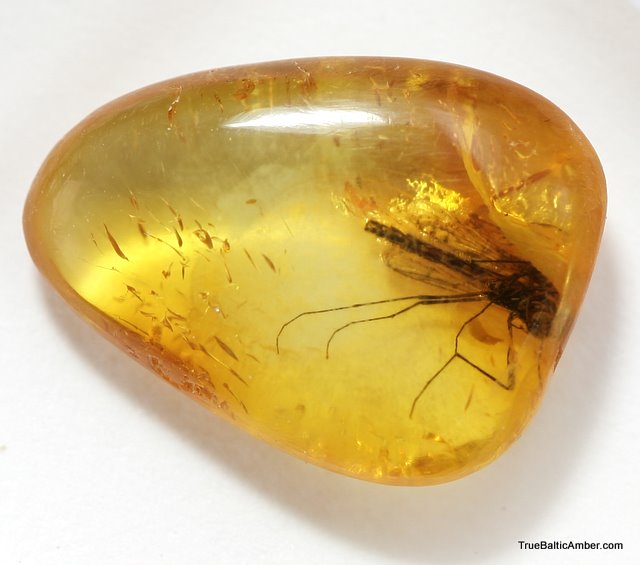
Trace fossils are imprints or indications that life was there.
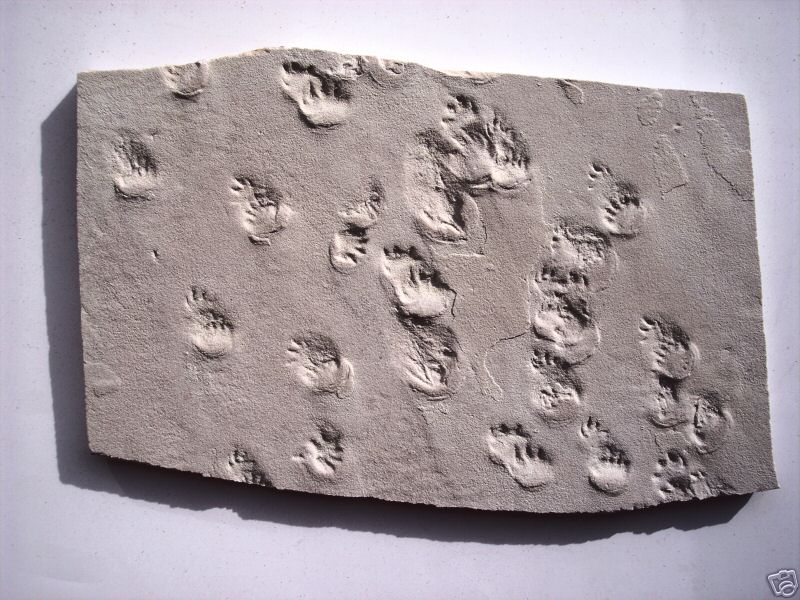
Fossilized wood is called petrified wood.
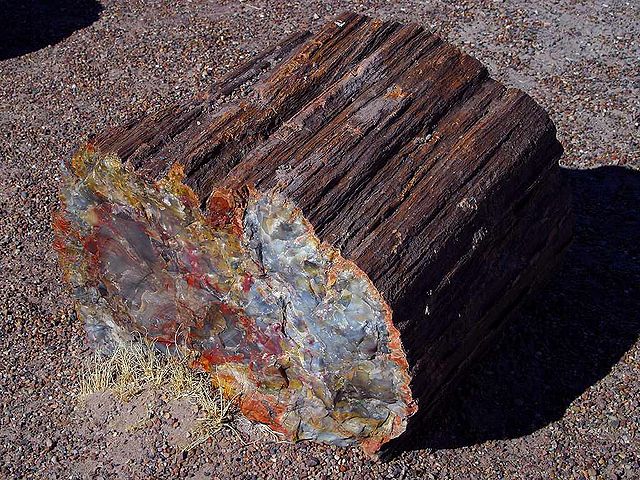
Mold and cast fossils.
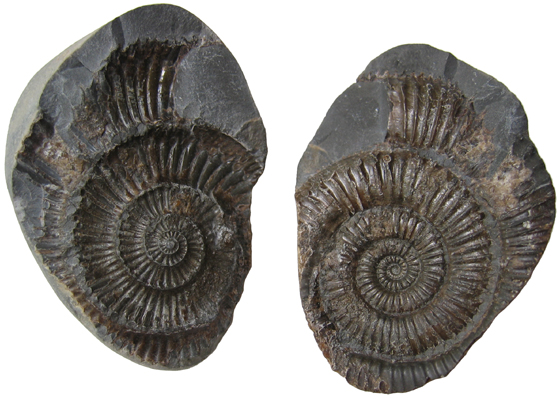
We created our own "fossils" in a lab experiment and are attempting to dig them out today. I opened the half sand half plaster and used a hammer and chisel to crack open my fossil. I got a good impression left in the plaster and sand and didn't damage the shell. This would be a good mixture to get impressions out of. Another good mixture was the 2/3 sand and 1/3 plaster. It would be good to use if you wanted to get a good impression and have the material soft enough to scrape away for kids. Our other mixture is not easy to use. It was four parts plaster and one part sand. It takes a very long time to scrape away the material, leaving no impression, and doesn't break open easily when using a hammer and chisel.
Friday, February 22, 2013
Geologic Time
Geologic time is a way geologists, paleontologists, and archaeologists use to determine the age of the Earth and the fossils or relics found in the Earth. A geologist uses geologic time to place events in order by time periods. A geologist might also use information from paleontologists or archaeologists to put a time period with the layer of rock they are looking at.
Geologic time is divided into groups. The groups in descending order of length are eons, eras, periods, and epochs.
 |
| http://www.learner.org/courses/envsci/visual/visual.php?shortname=geologic_time |
Geologic time is divided into groups. The groups in descending order of length are eons, eras, periods, and epochs.
Monday, February 4, 2013
If I Had a Hundred Dollars
If the mass of everything in our solar system is equal to 100 dollars, how much of the sun, planets (Mercury, Venus, Earth, Mars, Jupiter, Saturn, Uranus, Neptune), satellites, and minor elements (comets, asteroids, trans-neptunian objects such as the sister planets Eris and Discordia) be equal to? Here is my guess:
- Sun: 4 dollars
- Mercury: 1 dollar
- Venus: 1 dollar
- Earth: 1 dollar
- Mars: 1 dollar
- Jupiter: 3 dollars
- Saturn: 2 dollars
- Uranus: 3 dollars
- Neptune: 3 dollars
- Satellites: 1 dollar
- Minor Elements: 80 dollars
I was very wrong. The real answers:
- Sun: $99.85
- Mercury: 0.00002 cents
- Venus: 0.0003 cents
- Earth: 0.0003 cents
- Mars: 0.00004 cents
- Jupiter: 10.6 cents
- Saturn: 3.2 cents
- Uranus: 0.005 cents
- Neptune: 0.006 cents
- Satellites: negligible
- Minor Elements: negligible
http://www.umanitoba.ca/observatory/outreach/solarsystem/index.html
Wednesday, January 30, 2013
Misconceptions
We watched a video called A Private Universe and were asked to write out what we think the right answers were before we were given the answers.
The Reason for the Seasons:

The Reason for the Phases of the Moon:
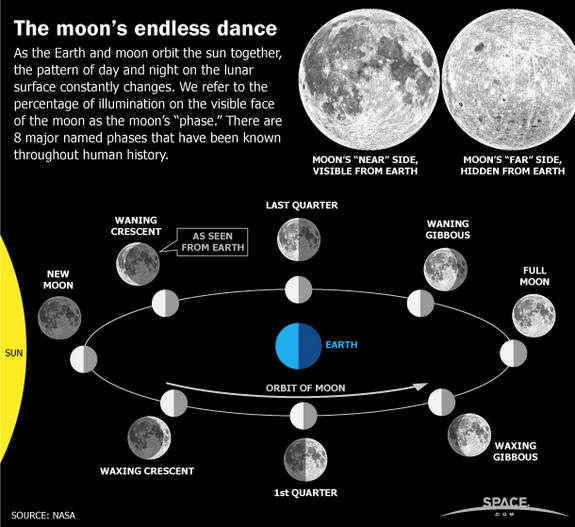
The Reason for the Seasons:
- The Earth is tilted and this creates the seasons as it spins around the Sun. The rays of the Sun are more direct during the summer, making it feel warmer. The rays from the Sun are dispersed over a greater area, making them indirect and feel colder in the winter.

The Reason for the Phases of the Moon:
- The Earth blocks the rays from the sun and creates a shadow. *This is a misconception*
- Half of the moon is always lit. The lit side of the moon faces the Sun. We see more or less light as the moon moves around the Earth.

Monday, January 14, 2013
M&Ms and the Lithosphere
Today we reviewed about the lithosphere. We started by looking at a diagram of the inside of the Earth. The diagram showed the crust, upper mantle, mantle, outer core, and the core of the Earth.

To demonstrate this concept with more depth, we bit into a peanut M&M and drew the result. There was a candy coating (the crust), chocolate (the mantle), and the peanut (the core) to the peanut. I observed that the coating of the M&M was very thin and the chocolate and the peanut are much larger and make up the majority of the M&M, as it is with the Earth. I think I would use this in my classroom to help the students understand the makeup of the lithosphere.

To demonstrate this concept with more depth, we bit into a peanut M&M and drew the result. There was a candy coating (the crust), chocolate (the mantle), and the peanut (the core) to the peanut. I observed that the coating of the M&M was very thin and the chocolate and the peanut are much larger and make up the majority of the M&M, as it is with the Earth. I think I would use this in my classroom to help the students understand the makeup of the lithosphere.
Subscribe to:
Comments (Atom)
